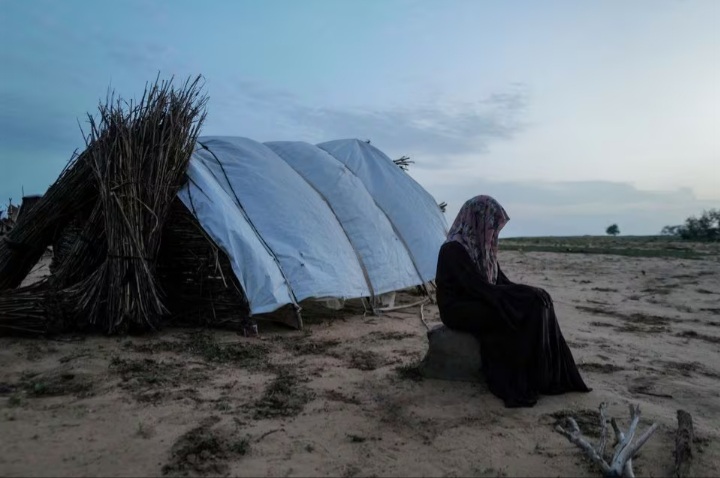Civil War movie review: Alex Garland’s most recent endeavor shows a divided United States from within. It’s an intense and visceral experience.
Review of the movie Civil War: Lee Smith, played by Kirsten Dunst, leads a motley crew of journalists as they travel from New York to Washington to speak with the president. They travel through refugee camps and battle areas, demonstrating to us the true cost of this war.
The writer-director of science fiction/fantasy allegories such as Men (2022), Annihilation (2018), and Ex Machina (2014), Alex Garland, now tackles the actual world in his most recent film, Civil War. Garland chooses journalism as the glass through which he can reflect and refract the horrors of war since he has always had a controversial viewpoint. It doesn’t matter why the two sides of his Civil War are at conflict; what counts is that “someone’s trying to kill us, (so) we’re trying to kill them.” For these armed fighters, self-preservation is the ultimate goal; there is no greater moral code at work here.
The premise
Civil War is anchored by a riveting performance by a hardened Kirsten Dunst. The movie also marks a reunion of sorts for Cailee Spaeny (Priscilla), Stephen McKinley Henderson (Dune), and Nick Offerman (TV’s Parks and Recreation), all of whom appeared in Garland’s sole television show Devs. The standout, however, is an uncredited Jesse Plemons who shows up for less than 10 minutes as a casually evil militia leader in a white-knuckle sequence that builds up to an explosive release.
Garland is a sensory stylist, using explosive sounds and shocking imagery to recreate the disorienting and otherworldly effect of being an observer of war and its impact. Without being too spoilery, one climactic sequence replaces the sound of gunshots with the sound of camera clicks, a heavy-handed but effective metaphor. Garland knows what he’s doing when he kicks off a particularly harrowing sequence with De La Soul’s 1989 hit Say No Go. But that approach has diminishing returns when he employs one too many incongruous needle drops. His frequent collaborator Rob Hardy uses a combination of documentary and conventional shooting styles which keeps the audience on the knife’s edge between reality and fiction.
It’s textbook Alex Garland storytelling
Civil War has already stirred up controversy for seemingly supporting a ‘both sides’ view. To be fair, the movie is a Rorschach test, allowing both conservatives and liberals to see themselves as the righteous side. At one point, a character refers to the ‘Antifa massacre’ leaving it up to the viewer to decide whether Antifa was doing the massacring, or being massacred themselves. Garland also plays coy with the idea of journalist-as-observer. It’s ultimately unclear whether he sees journalists as heroes whose sacred duty it is to record events for posterity, or as vultures who feed on a combination of suffering and sensationalism. It’s textbook Alex Garland storytelling – asking pointed questions without offering any easy answers.
The last 20 minutes of the film are a tour-de-force
For those still looking for answers, perhaps the most chilling sequence in an otherwise explosive and bloody movie comes when our protagonists drive through a small town in Pittsburgh that’s functioning normally. Children are playing in perfectly manicured front yards, and stores are operating as if the country isn’t up in flames all around them. Upon being asked, one of the townsfolk responds that “it’s best not to be involved”. It’s an uncompromisingly cynical view of humanity.
The last 20 minutes of the film are a tour-de-force as the rebel Western Forces descend on the White House in an attempt to capture the President. Garland is self-aware enough to know that even if we see the rebels as the ‘right side’ (if only because our protagonists are embedded with them), the sequence cannot help but evoke the January 6th storming of the Capitol building. Desecration is still desecration, it hardly matters whether the cause is just.









